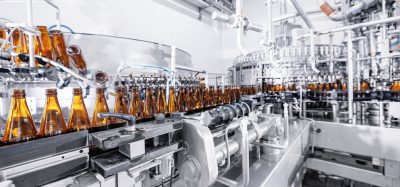Pumping technology for the wine cellar: Modified progressing cavity pumps used to convey wine and mash sensitively
- Like
- Digg
- Del
- Tumblr
- VKontakte
- Buffer
- Love This
- Odnoklassniki
- Meneame
- Blogger
- Amazon
- Yahoo Mail
- Gmail
- AOL
- Newsvine
- HackerNews
- Evernote
- MySpace
- Mail.ru
- Viadeo
- Line
- Comments
- Yummly
- SMS
- Viber
- Telegram
- Subscribe
- Skype
- Facebook Messenger
- Kakao
- LiveJournal
- Yammer
- Edgar
- Fintel
- Mix
- Instapaper
- Copy Link
Posted: 1 December 2015 | NETZSCH Pumpen & Systeme GmbH | No comments yet
Wine is one of the most sensitive drinks in the world. Even small disturbances during production can significantly reduce the quality…


Wine is one of the most sensitive drinks in the world. Even small disturbances during production can significantly reduce the quality. But as a lot of the steps in the process – particularly transportation of the grape juice – are unavoidable, the largest winery in Northern Italy uses a unique pump from NETZSCH Pumpen & Systeme GmbH to convey its wine sensitively.


The entire pump unit has been installed on a rolling carriage so that it is very easy to move around. Only the pipes and the power have to be connected.
The progressing cavity technology installed in the pump gently transports the juice without pulsation or fluctuations in pressure, regardless of the fact that the pipe is more than two kilometres long. The pump is even mobile thanks to a wheeled carriage and can be moved between the tanks. The special conveying technology is also in action at an early stage of wine production, as it is specially adapted to pump even abrasive and acidic mash without damaging the system or the sensitive grape pulp.
The largest winery in Mezzocorona in the Trentino region has three production sites. Underground pipes of different lengths connect the buildings to ensure their wines are uniformly produced. The largest is more than two kilometres long and crosses under a train line. The wine is pumped through these pipes as required, but the different dis-tances pose a challenge, as the pump pressure varies according to the length of the pipe, which can affect the efficiency of traditional pumps. Strong shear forces and pulsation also have to be avoided, as well as air pockets that would cause the wine to froth up and oxidise.
Protecting your medium against pressure and pulsation
The winery therefore chose a NEMO® progressing cavity pump that pumps with exceptionally stable pressure and great sensitivity.
A digital pressure sensor with connected controller has been installed to protect the technology. The sensor slows down the system if the counter pressure is too high (above 5.5 bar) to protect the system and the medium. Between 12 and 35 m³ of wine is conveyed per house between the wine cellar’s sites at speeds of 60 to 230 rpm. The flow rate can be adjusted infinitely via the speed and it is even possible to change the direction of plow effortlessly by reversing the direction of rotation.
Food-compatible and doubly protected against dry running
The system is also doubly protected against dry running to avoid increased wear and damage as a result of partial or complete lack of medium. Firstly, an STP2 stator protection system from NETZSCH monitors the surface temperature of the stator at all times using thermal sensors. Secondly, optical sensors constantly check to see whether medium is present and running through the system. A viewing window is also installed at the rear end of the pump for the operator to check the process directly.
In addition to sensitive pumping and a high degree of reliability, the pump’s compatibility with food and drink regulations was essential for the wine grower, as the wine must not be contaminated and its chemical composition must not change. All components of the NEMO® progressing cavity pump that come into contact with product are therefore made of FDA-compliant elastomers or of stainless steel. Tests by the operator have demonstrated that the wine has lost none of its quality.
Wheeled carriage for pump, drive and control unit


To convey mash, NETZSCH has developed a compact, mobile hopper pump that is able to convey the abrasive and at times acidic medium reliably.
The system is also designed for easy cleaning and with as little surface area as possible for product to be deposited. The pump chamber has therefore been designed free of dead space and for optimum flow and all metallic surfaces have a polished finish. The system, including its sensors and control panel, is also splashproof so that it can also be easily cleaned from the outside with a hose. The system is even impervious to rain. At the same time, care was also taken when designing and installing the pump to ensure that there was no dead space around or under the components where water or dirt might gather.
As the wine pump has to be used with different production tanks, a wheeled carriage made of steel was designed to hold the entire pump system. The carriage carries the pump with flanged drive, as well as the switch cabinet with frequency inverter and con-trol panel. The complete pump system can therefore be moved easily between the tanks as a single unit. The system does not have to be reconfigured or set up – the pump is merely connected to the pipes and power and can start working immediately.
Robust hopper for mash feed
NETZSCH not only develops conveying solutions for the final wine product, but also specially designs systems for earlier steps in the process, starting from particularly sensitive conveying of all the fruit. For example, a hopper pump was specially made to feed mash – not just of grapes, but optionally of other fruit as well. It has a fill top made of stainless steel. An integrated grid traps larger foreign bodies and also prevents injuries during filling. The special conveying technology of the progressing cavity pump ensures that the fruit pulp is not crushed any further and that the pips do not break up in this type of application. The mash is conveyed directly to the compression chamber, from where it is easily pumped into the chambers in the conveying section thanks to the bevel-shaped stator inlet. A feeding screw that runs around the shaft supports the filling process if necessary. The medium is not crushed and strong centrifugal forces that could cause the mash to separate into its components do not occur in this type of pump. The flow rate can be steplessly varied by frequency inverter-based drive control.
The steel alloy with chrome, nickel and molybdenum makes the hopper exceptionally resistant to corrosion and is also used for the pump housing and rotor for high stability and long service life. This is even more important given that the pH values of the mash can vary considerably – including into the acidic range. The solids in the grape pulp are also abrasive, so highly robust materials are essential to maintain the pump’s service life. A highly resistant, specially developed perbunan blend that has proved itself time and again is used for the stator, which is similarly exposed to high stresses. The blend is stable even at high temperatures up to 80°C that are used in alternative methods for rapid red wine production.
The mash pump can also be mobile if necessary. A handle on the hopper is used to tip up the pump which can then be pushed or pulled on two wheels installed under the drive. The hopper can also be removed very easily for cleaning or space-saving storage. Due to the robust materials installed, the pump can therefore be used over the entire harvest period without significant maintenance. Even the maintenance that is typical at the end of the season is quickly completed with simple aids and without special tools thanks to the unique design.









